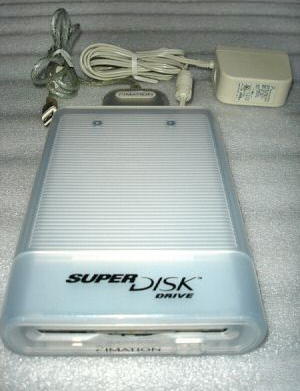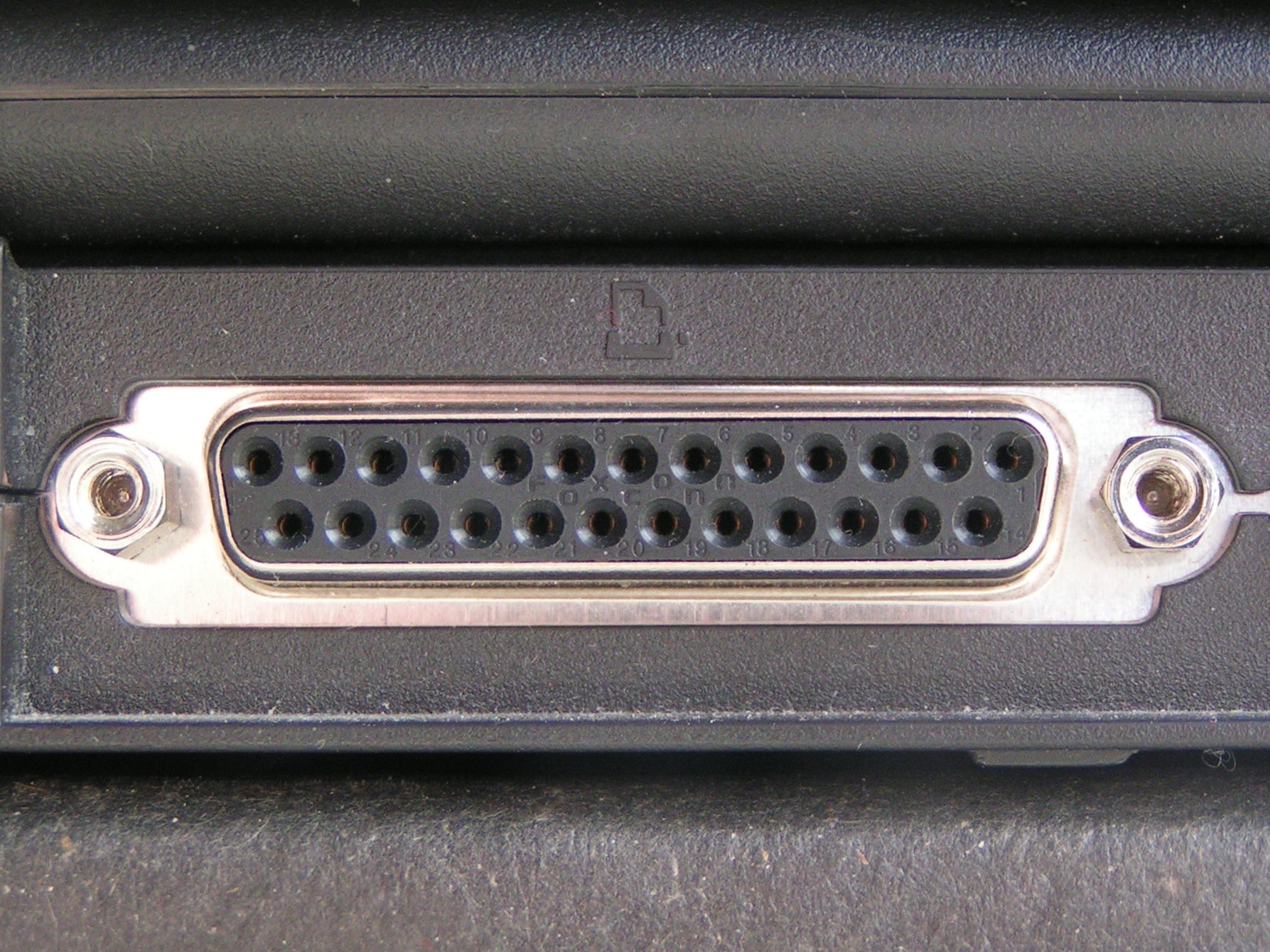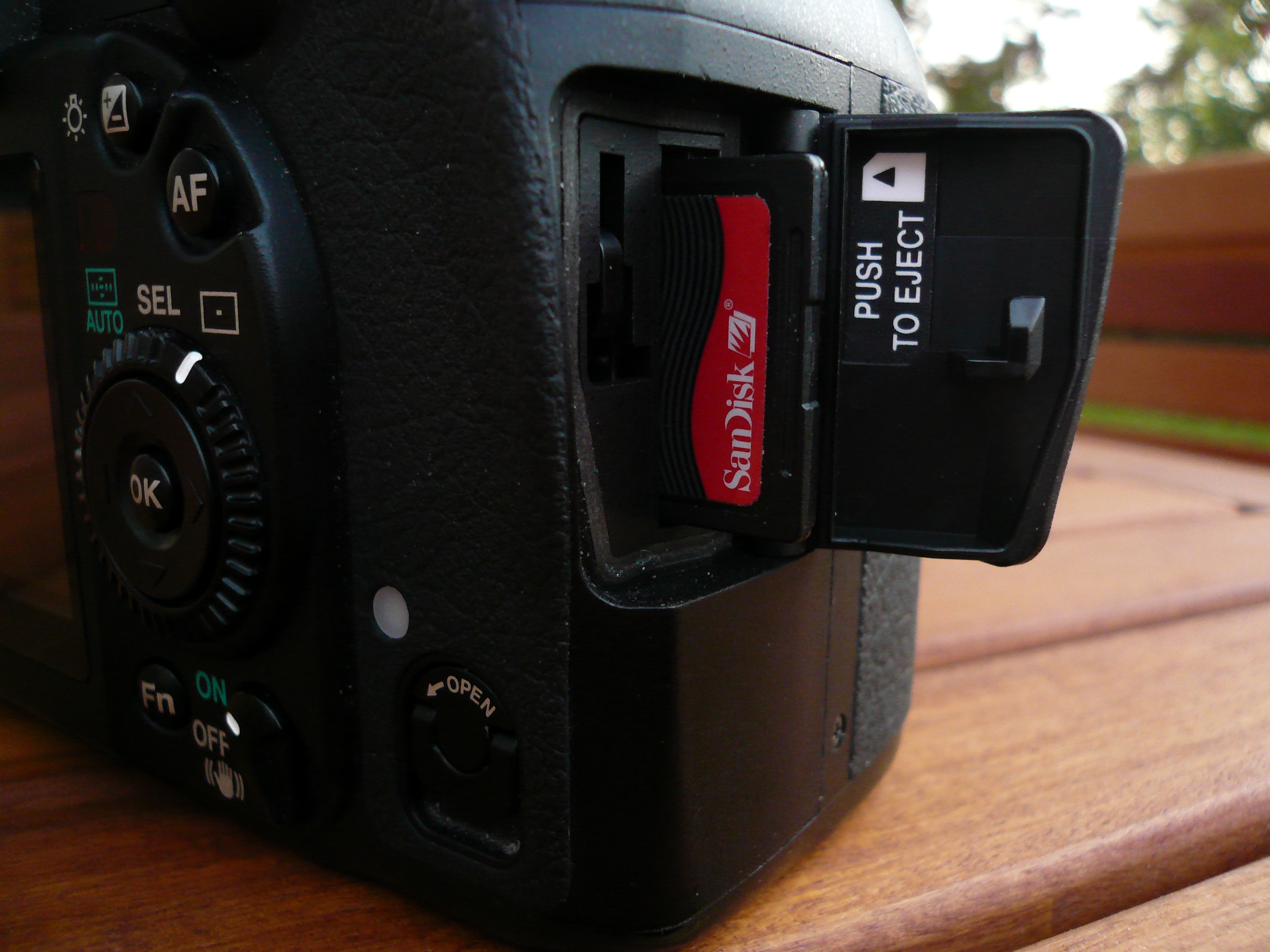|
LS-120 Drive
The SuperDisk LS-120 is a high-speed, high-capacity alternative to the 90 mm (3.5 in), 1.44 MB floppy disk. The SuperDisk hardware was created by 3M's storage products group Imation in 1997, with manufacturing chiefly by Matsushita. The SuperDisk had little success in North America; with Compaq, Gateway and Dell being three of only a few OEMs who supported it. It was more successful in Asia and Australia, where the second-generation SuperDisk LS-240 drive and disk was released. SuperDisk worldwide ceased manufacturing in 2003. History The design of the SuperDisk system came from an early 1990s project at Iomega. It is one of the last examples of floptical technology, where lasers are used to guide a magnetic head which is much smaller than those used in traditional floppy disk drives. Iomega orphaned the project around the time they decided to release the Zip drive in 1994. The idea eventually ended up at 3M, where the concept was refined and the design ... [...More Info...] [...Related Items...] OR: [Wikipedia] [Google] [Baidu] |
MSD Super Disk
The MSD Super Disk were a series of 5¼-inch floppy disk drives compatible to some degree with the Commodore 1541 disk drive. produced by Micro Systems Development (Dallas, Texas; later MSD Systems) for use with Commodore International, Commodore 8-bit home computers. Two different versions of the MSD Super Disk were available: the single-drive model, SD-1; and the dual-drive model, SD-2. Introduction Introduced in 1983, the MSD Super Disk drives were the first third-party devices designed for compatibility with the Commodore 64, although other manufacturers soon followed suit. The MSD drives include both an IEEE-488 Parallel port, parallel interface and the custom Commodore Serial port, serial interface. Therefore, they can be connected to any Commodore 8-bit system, from the Commodore PET to the Commodore 64, C64 and Commodore 128, C128, without any converters or other add-on devices. Features and pricing The MSD SD-1 was more expensive than the Commodore 1541. For instance, a ... [...More Info...] [...Related Items...] OR: [Wikipedia] [Google] [Baidu] |
Floptical
Floptical refers to a type of floppy disk drive that combines magnetic and optical technologies to store data on media similar to standard -inch floppy disks. The name is a portmanteau of the words "floppy" and "optical". It refers specifically to one brand of drive and disk system, but is also used more generically to refer to any system using similar techniques. The original Floptical technology was announced in 1988 and introduced late in 1991 by Insite Peripherals, a venture funded company set up by Jim Adkisson, one of the key engineers behind the original -inch floppy disk drive development at Shugart Associates in 1976. The main shareholders were Maxell, Iomega and 3M. Technical aspects The technology involves reading and writing data magnetically, while optically aligning the read/write head in the drive using grooves in the disk being sensed by an infrared LED and sensor (a form of visual servo). The magnetic head touches the recording surface, as it does in a norm ... [...More Info...] [...Related Items...] OR: [Wikipedia] [Google] [Baidu] |
Parallel Port
In computing, a parallel port is a type of interface found on early computers (personal and otherwise) for connecting peripherals. The name refers to the way the data is sent; parallel ports send multiple bits of data at once ( parallel communication), as opposed to serial communication, in which bits are sent one at a time. To do this, parallel ports require multiple data lines in their cables and port connectors and tend to be larger than contemporary serial ports, which only require one data line. There are many types of parallel ports, but the term has become most closely associated with the printer port or Centronics port found on most personal computers from the 1970s through the 2000s. It was an industry ''de facto'' standard for many years, and was finally standardized as IEEE 1284 in the late 1990s, which defined the Enhanced Parallel Port (EPP) and Extended Capability Port (ECP) bi-directional versions. Today, the parallel port interface is virtually non-exis ... [...More Info...] [...Related Items...] OR: [Wikipedia] [Google] [Baidu] |
FAT12
File Allocation Table (FAT) is a file system developed for personal computers. Originally developed in 1977 for use on floppy disks, it was adapted for use on hard disks and other devices. It is often supported for compatibility reasons by current operating systems for personal computers and many mobile devices and embedded systems, allowing interchange of data between disparate systems. The increase in disk drives capacity required three major variants: FAT12, FAT16 and FAT32. The FAT standard has also been expanded in other ways while generally preserving backward compatibility with existing software. FAT is no longer the default file system for Microsoft Windows computers. FAT file systems are still commonly found on floppy disks, flash and other solid-state memory cards and modules (including USB flash drives), as well as many portable and embedded devices. FAT is the standard file system for digital cameras per the DCF specification. Overview Concepts ... [...More Info...] [...Related Items...] OR: [Wikipedia] [Google] [Baidu] |
Cylinder-Head-Sector
Cylinder-head-sector (CHS) is an early method for giving addresses to each physical block of data on a hard disk drive. It is a 3D-coordinate system made out of a vertical coordinate ''head'', a horizontal (or radial) coordinate ''cylinder'', and an angular coordinate ''sector''. Head selects a circular surface: a platter in the disk (and one of its two sides). Cylinder is a cylindrical intersection through the stack of platters in a disk, centered around the disk's spindle. Combined, cylinder and head intersect to a circular line, or more precisely: a circular strip of physical data blocks called ''track''. Sector finally selects which data block in this track is to be addressed, as the track is subdivided into several equally-sized portions, each of which is an arc of (360/n) degrees, where n is the number of sectors in the track. CHS addresses were exposed, instead of simple linear addresses (going from ''0'' to the ''total block count on disk - 1''), because early hard drive ... [...More Info...] [...Related Items...] OR: [Wikipedia] [Google] [Baidu] |
FAT16B
File Allocation Table (FAT) is a file system developed for personal computers. Originally developed in 1977 for use on floppy disks, it was adapted for use on hard disks and other devices. It is often supported for compatibility reasons by current operating systems for personal computers and many mobile devices and embedded systems, allowing interchange of data between disparate systems. The increase in disk drives capacity required three major variants: FAT12, FAT16 and FAT32. The FAT standard has also been expanded in other ways while generally preserving backward compatibility with existing software. FAT is no longer the default file system for Microsoft Windows computers. FAT file systems are still commonly found on floppy disks, flash and other solid-state memory cards and modules (including USB flash drives), as well as many portable and embedded devices. FAT is the standard file system for digital cameras per the DCF specification. Overview Concepts ... [...More Info...] [...Related Items...] OR: [Wikipedia] [Google] [Baidu] |
Mebibyte
The byte is a unit of digital information that most commonly consists of eight bits. Historically, the byte was the number of bits used to encode a single character of text in a computer and for this reason it is the smallest addressable unit of memory in many computer architectures. To disambiguate arbitrarily sized bytes from the common 8-bit definition, network protocol documents such as The Internet Protocol () refer to an 8-bit byte as an octet. Those bits in an octet are usually counted with numbering from 0 to 7 or 7 to 0 depending on the bit endianness. The first bit is number 0, making the eighth bit number 7. The size of the byte has historically been hardware-dependent and no definitive standards existed that mandated the size. Sizes from 1 to 48 bits have been used. The six-bit character code was an often-used implementation in early encoding systems, and computers using six-bit and nine-bit bytes were common in the 1960s. These systems often had memory words ... [...More Info...] [...Related Items...] OR: [Wikipedia] [Google] [Baidu] |
Digital Camera Memory Media
A memory card is an electronic data storage device used for storing digital information, typically using flash memory. These are commonly used in digital portable electronic devices. They allow adding memory to such devices using a card in a socket instead of a protruding USB flash drives. History The basis for memory card technology is flash memory. It was invented by Fujio Masuoka at Toshiba in 1980 and commercialized by Toshiba in 1987. PC Cards (PCMCIA) were the first commercial memory card formats (type I cards) to come out, but are now mainly used in industrial applications and to connect I/O devices such as modems. In 1992, SanDisk introduced FlashDisk, a PCMCIA card and one of the first memory cards that did not require battery power to retain its contents. Since 1994, a number of memory card formats smaller than the PC Card arrived. The first one was CompactFlash and later SmartMedia and Miniature Card. The desire for smaller cards for cell-phones, PDAs, and comp ... [...More Info...] [...Related Items...] OR: [Wikipedia] [Google] [Baidu] |
Digital Camera
A digital camera is a camera that captures photographs in digital memory. Most cameras produced today are digital, largely replacing those that capture images on photographic film. Digital cameras are now widely incorporated into mobile devices like smartphones with the same or more capabilities and features of dedicated cameras (which are still available). High-end, high-definition dedicated cameras are still commonly used by professionals and those who desire to take higher-quality photographs. Digital and digital movie cameras share an optical system, typically using a lens with a variable diaphragm to focus light onto an image pickup device. The diaphragm and shutter admit a controlled amount of light to the image, just as with film, but the image pickup device is electronic rather than chemical. However, unlike film cameras, digital cameras can display images on a screen immediately after being recorded, and store and delete images from memory. Many digital cameras can ... [...More Info...] [...Related Items...] OR: [Wikipedia] [Google] [Baidu] |
CD-RW
CD-RW (Compact Disc-Rewritable) is a digital media, digital optical disc data storage device, storage format introduced in 1997. A CD-RW compact disc (CD-RWs) can be written, read, erased, and re-written. CD-RWs, as opposed to CDs, require specialized readers that have sensitive laser optics. Consequently, CD-RWs cannot be read in many CD readers built prior to the introduction of CD-RW. CD-ROM drives with a "MultiRead" certification are compatible. CD-RWs must be erased or blanked before reuse. Erasure methods include full blanking where the entire surface of the disc is erased and fast blanking where only metadata areas, such as PMA (CD), PMA, TOC (CD), TOC and pregap, are cleared. Fast blanking is quicker and usually sufficient to allow rewriting the disc. Full blanking removes all traces of the previous data, and is often used for confidentiality purposes. CD-RWs can sustain fewer re-writes compared to other storage media (ca. 1,000 compared up to 100,000). Ideal use is ... [...More Info...] [...Related Items...] OR: [Wikipedia] [Google] [Baidu] |
Superformatting
Superformatting is the process of formatting a floppy disk at a capacity that the disk is not designed for. It can ruin a floppy disk, but it is used in some floppy-based Linux distros to increase the room for applications and utilities. muLinux is a notable example of this technique. Another common use (which is not as popular nowadays) was to format low-density 3.5-inch or 5.25-inch floppies as high-density, or in the case of 3.5-inch disks, even extra-high density (HD-36). "Notched" disks will usually turn up a lot of bad sectors, especially if the formatted capacity is a considerable (1.5 to 3) number of times higher than intended. Superformatting is usually done with a low-level format (such as "FORMAT /U" in DOS and "fdformat Fdformat is the name of two unrelated programs: * A command-line tool for Linux that " low-level formats" a floppy disk. * A DOS tool written in Pascal by Christoph H. Hochstätter that allows users to format floppy disks to a higher than usu .. ... [...More Info...] [...Related Items...] OR: [Wikipedia] [Google] [Baidu] |




